Over the years, I’ve created content strategies for companies like Google, Algolia, DocSend, and many more. No matter how big the company or how complicated its product, the content strategy always boiled down to answering three straightforward questions.
These questions are adapted from the legendary book Good Strategy, Bad Strategy by Richard Rumelt. They’re designed to:
- identify the problem that needs solving;
- surface any unique strengths you can use in your strategy;
- and pair your problem with the right type of content for the job.
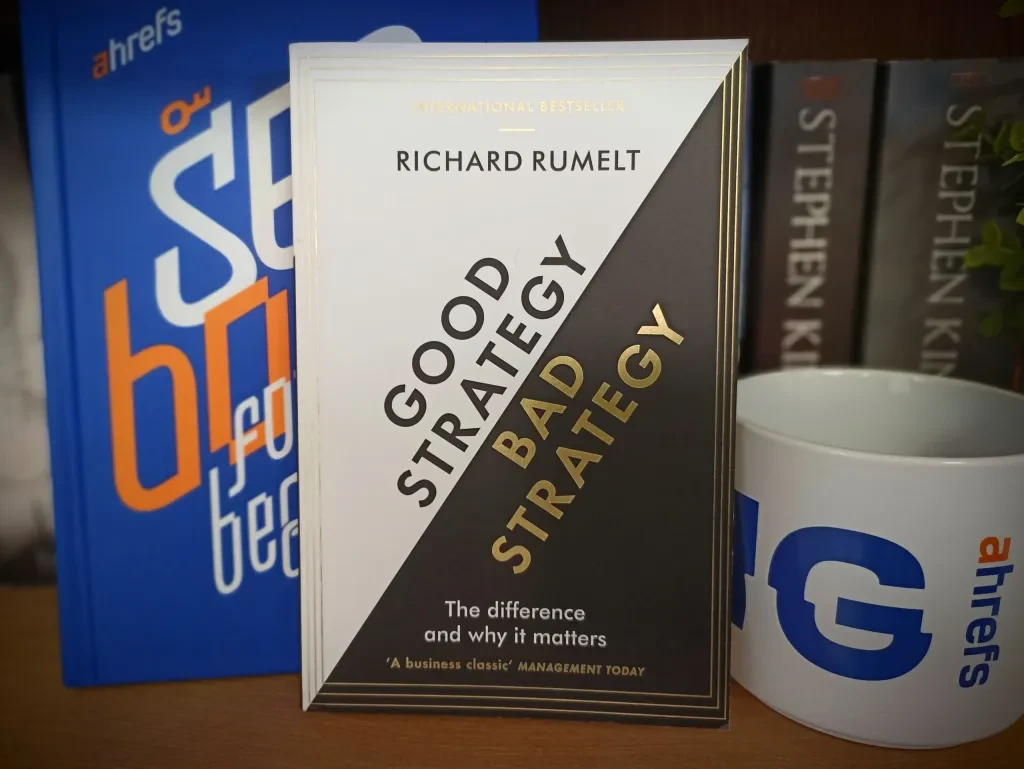
Contents
1. What challenges do you want to overcome?
2. What leverage can you exploit?
3. Which types of content can overcome those challenges?
4. Zapier’s organic search strategy
5. Animalz’s thought leadership strategy
6. Freshpaint’s sales enablement strategy
1. What challenges do you want to overcome?
Most companies have the same core problem: they need more customers, and they need more money from those customers. But every company is unique, and solving that problem usually requires overcoming a host of more specific challenges, like:
- Building a sales pipeline from scratch. Many newer companies turn to content to build demand for their product when there wasn’t demand before.
- Stopping reliance on advertising. It’s common for businesses to rely on paid advertising as their main source of customers, but at a certain point, it starts becoming too expensive to maintain.
- Getting more sales from existing traffic. In other cases, companies might generate plenty of traffic but struggle to convert those visitors into paying customers.
- Reducing customer churn. Some companies have plenty of visitors and leads, but struggle to keep people around once they become customers.
Each of these challenges (and many others) can be helped by content.
Crucially, the more specific you are with your diagnosis of your challenges, the easier it becomes to work out a solution.
2. What leverage can you exploit?
The best content strategies include leverage: your company’s secret weapon, something that makes content easier to create, or helps it perform better. Virtually every company has some type of leverage to use:
- Unique data. Many companies have access to unique data from their users or products.
- Personal brands. Others have the benefit of well-known founders or team members with big social media followings.
- Team expertise and skills. Some teams have unique experiences that can be turned into unique content (like our very own Patrick Stox, a.k.a. Mr Technical SEO).
- Network of experts. If you’re lucky to know lots of smart and brilliant people, you can include their experiences and perspectives throughout your content (like First Round Review, and their articles penned by seasoned startup founders).
Recognizing and using your unique strengths is the key to creating a content strategy that can’t simply be copied by your competitors.
3. Which types of content can overcome those challenges?
There are plenty of content types, from search content to sales enablement, each with its own strengths and weaknesses. Building the right content strategy is about choosing the right type for your specific challenges.
For example,
- Search-optimized content is perfect for building a predictable source of website traffic, month over month… but it might not help to reach senior execs or founders who don’t Google common problems.
- Thought leadership content (like opinion pieces or research reports) can be great for generating word-of-mouth discussion and backlinks, but usually suffers from “spiky” traffic that doesn’t grow predictably each month.
- Sales enablement content (like case studies or gated content) helps to close sales deals, but it’s rarely interesting to the casual reader, and does little to attract new visitors to a company.
Or, to put it in visual format:
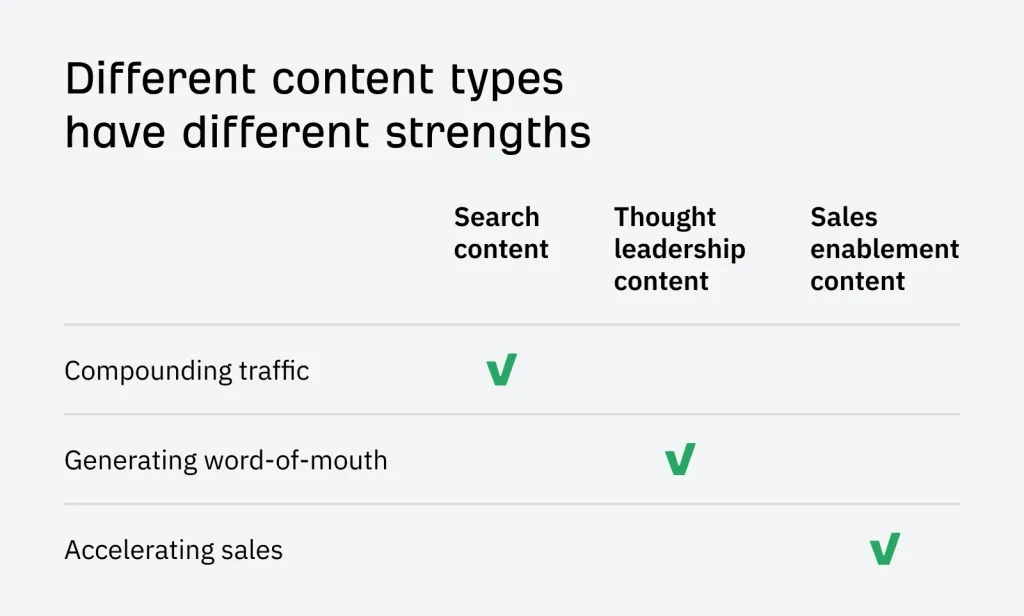
Let’s use these questions to reverse-engineer 3 very different, very successful content strategies, to understand why they work (and how you could emulate them in your own business).
Zapier’s organic search strategy
Zapier is an automation platform that connects different pieces of software together into helpful workflows. Zapier’s strategy is built around organic search, generating an estimated 8 million monthly visits:
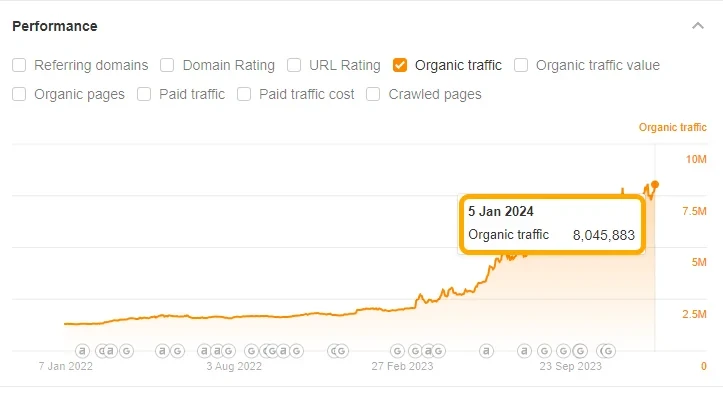
Most of that traffic comes from three types of search-optimized content:
- “Best apps” lists, like The best free CRM software in 2024 or The best video editing software in 2024
- Landing pages for their app integrations, created programmatically, like their Typeform integrations or Top AI tools pages
- “How to” content that shows users how to use Zapier, like this guide to setting up a Google Form or downloading from GitHub, which both promote Zapier.
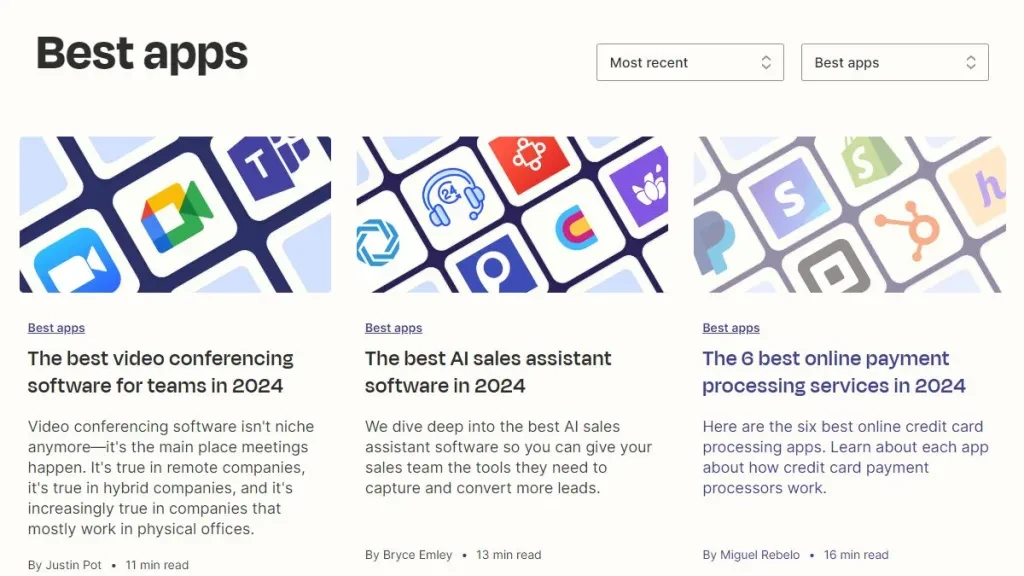
Looking at their site structure in Ahrefs, you can see that an estimated 92.8% of their monthly organic search traffic comes from their blog and app integration pages combined:
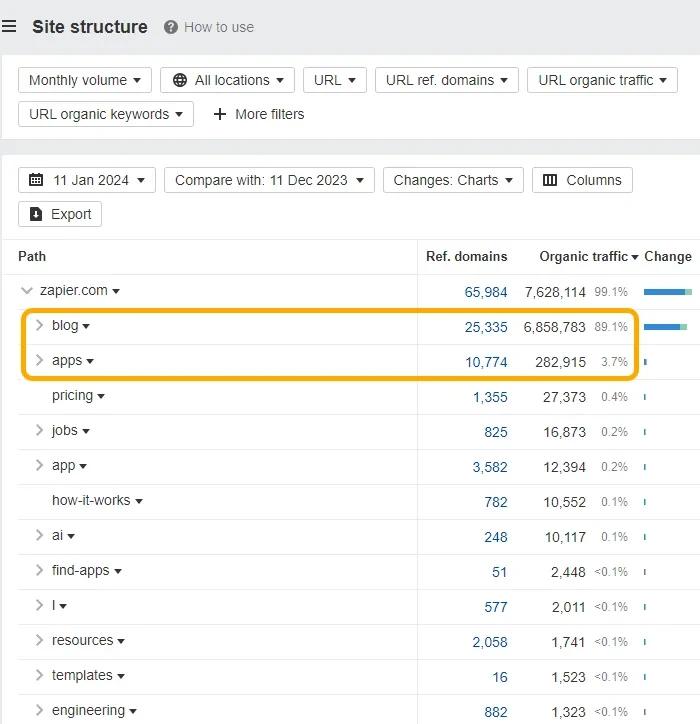
Digging deeper, it’s possible to see which apps generate the most visits for Zapier (in terms of Organic traffic), and which have the greatest number of pages dedicated to them (in terms of Organic pages).
For example, Zapier have created over 1,000 pages in their /google-sheets subfolder, which generates an estimated 4,000 organic pageviews per month:
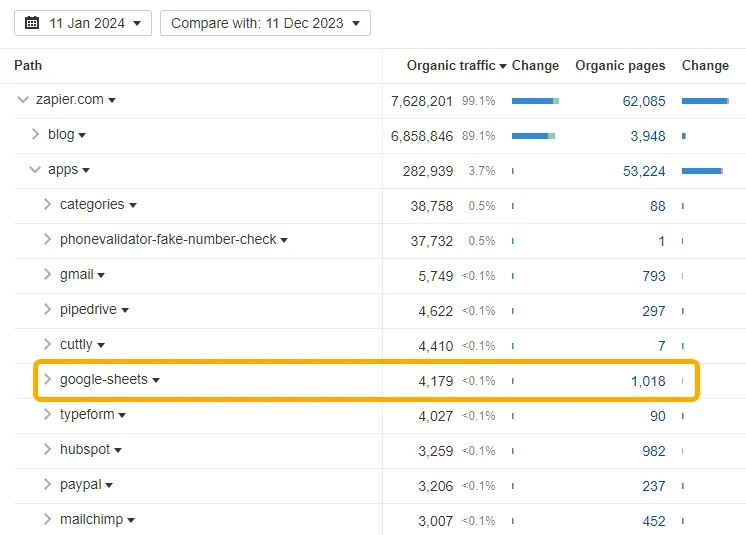
What challenges does Zapier’s strategy solve?
- Generating lots of signups to fuel growth. Zapier is a freemium company: the majority of its users pay nothing to use the product, and only a small percentage become paying customers. To grow, content needs to generate lots and lots of visitors. Organic search content provides the predictable, compounding traffic growth needed to make the freemium model work.
- Marketing to people in dozens of different industries. Zapier is a horizontal product, used across many industries, from marketing to finance, so Zapier writes about topics and tools used in dozens of industries.
- Helping users get more value from the product. Zapier is easy to start with but can quickly become more complicated. “How to” content helps guide users toward helpful use cases.
What leverage does Zapier exploit?
- Integrations with hundreds of tools. Zapier can connect to a mind-boggling array of tools, from calendars to website builders to databases. This creates a great source of leverage: it’s worth writing about popular apps, like ChatGPT or Figma, because users of those tools have the potential to become Zapier customers.
FURTHER READING
- 6 Things I Love About Zapier’s SEO Strategy: A Case Study
Animalz’s thought leadership strategy
Animalz is a content marketing agency. While most other agencies focus their content strategy on SEO, Animalz’s focuses on thought leadership content:
- Opinion pieces, like why measuring performance metrics can hinder growth.
- Inside looks at how the company functions, from AI research to link-building.
- Data collection and research, like their content marketing benchmark reports.
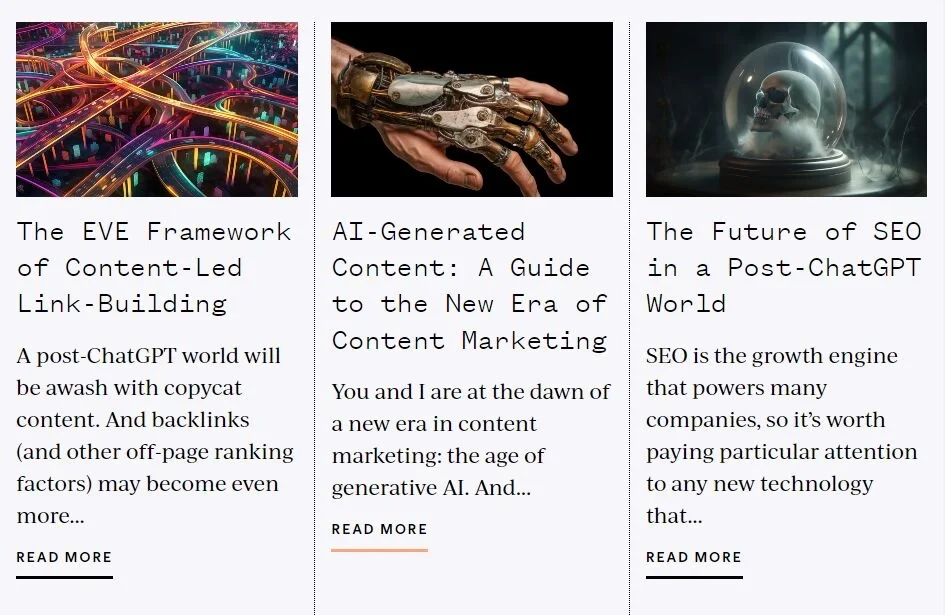
SEO is an afterthought, but because opinion and research content are distributed primarily through word of mouth, social media, and industry newsletters, their content naturally attracts dozens and dozens of good quality links:

What challenges does Animalz’s strategy solve?
- Attracting experienced marketers. As an agency, Animalz doesn’t need huge volumes of traffic and thousands of users to grow. Instead, it needs to attract the attention of a handful of experienced marketing executives at B2B software startups—something which opinions and research are better at than search content.
- Standing out from competitors. Most content agencies publish huge volumes of search content, creating lots of competition for keywords. By ignoring search, Animalz differentiates itself from its competitors.
- Proving that their product is great. Writing high-quality, journalistic essays act as a product showcase for Animalz, in the same way a free trial or demo would for a software company.
What leverage does Animalz exploit?
- Unique experience. As a content agency, Animalz has insight into hundreds of companies’ content strategies, allowing them to see which types of content perform best, and create data-based performance benchmarks—a unique source of data that no other company possesses.
Freshpaint’s sales enablement strategy
Freshpaint is a healthcare marketing compliance tool. Their content strategy is focused almost entirely on sales enablement: creating resources that help their sales team nurture and close potential customers. That means:
- Use case content, like explaining how Freshpaint can be used to embed YouTube videos on your website in a HIPAA-compliant way.
- FAQ content, like exploring how their product integrates with GA4.
- Detailed product documentation, explaining how Freshpaint integrates with the company’s existing tools and processes.
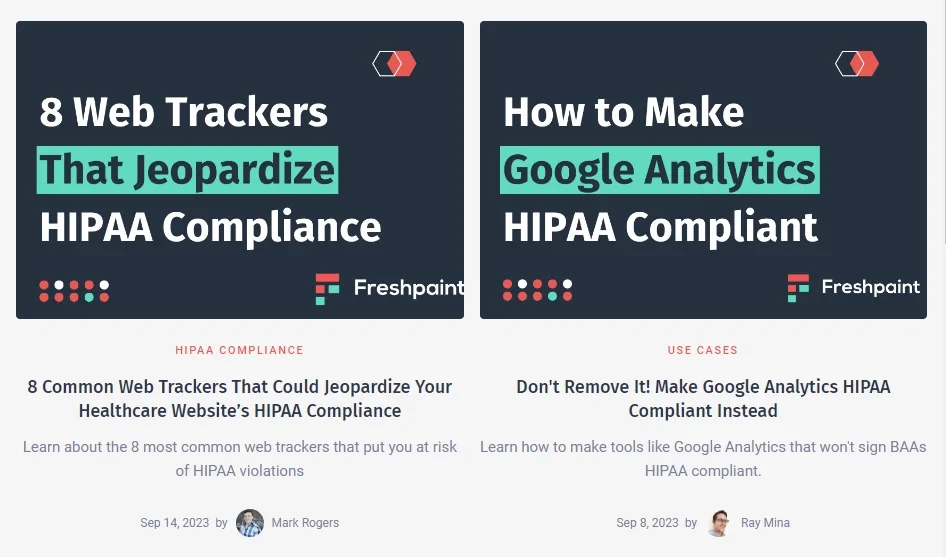
What challenges does Freshpaint’s strategy solve?
- Closing deals with hospitals and healthcare providers. Almost all of Freshpaint’s customers find the company through word-of-mouth in the tight-knit healthcare industry. Finding new customers isn’t the issue: it’s persuading risk-averse companies to buy, something that case studies are designed to support.
- Persuading multiple stakeholders. Lawyers, compliance teams, even IT teams, can all stop sales dead in their tracks—a common challenge in B2B content marketing—so Freshpaint creates content to address sales objections from everyone involved in the buying process.
- Explaining technical topics in simple language. HIPAA compliance, BAA, PHI… healthcare is rife with technical jargon, and written content helps explain how Freshpaint handles compliance problems in simple, straightforward text.
What leverage does Freshpaint exploit?
- Hyper-focus. While other companies have to divide their content efforts across multiple audiences and pain points, Freshpaint is able to focus every piece of content solely on solving the problem of HIPAA compliance for marketing teams.
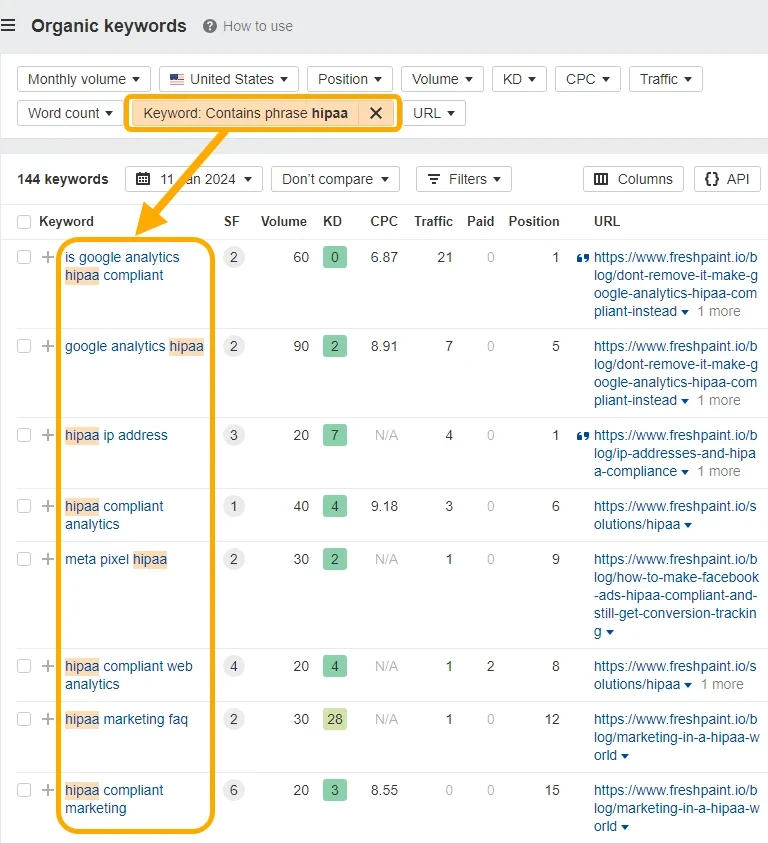
Final thoughts
Content strategy can feel complicated, requiring you to juggle different goals, audiences, and content types. But creating a simple strategy can be as simple as answering three questions:
- What is the single most important problem we want to solve?
- What unique strengths can we use to help us solve it?
- What type of content is the best for solving our problem?
Source from Ahrefs
Disclaimer: The information set forth above is provided by ahrefs.com independently of Alibaba.com. Alibaba.com makes no representation and warranties as to the quality and reliability of the seller and products.



